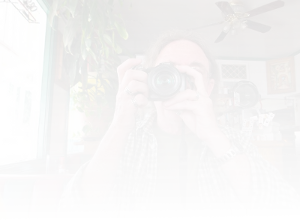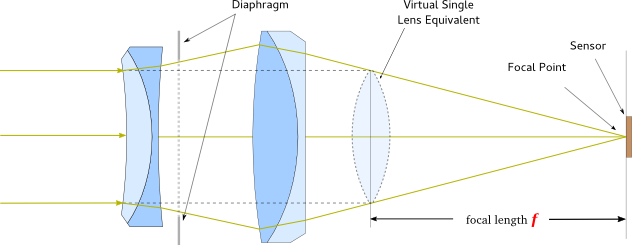


The focal length of a lens is the distance from the lens to the point where all the light rays originating an infinite distance away converge blah blah blah. That's what they always say. Silly. What does it even mean that something is an infinite distance away? If it is an infinite distance away we will never see it. The light rays will never get to us. If something's just a mile from you you won't see it without a very expensive telephoto lens and a good tripod.
Luckily you already know a great example. When a kid takes a magnifying glass outside and carefully gets the focus on an ant or a piece of paper, the distance from the lens to the smoking thing is the focal length. The sun is really far away, so the light rays going into the lens, are all going straight into the lens. That's really the idea they're getting at when they talk about light far away, they just mean the light all goes in straight and all gets bent to the same place, the focal point.

With a single lens, the focal point is easy, just like our magnifying glass. You can just measure from the center of the lens to the place that all the light coming straight into the lens focuses.

A telephoto lens can have an effective focal length longer than the lens because it starts out like the single lens, but before the light rays can converge they hit another lens that spreads them out a little bit so that they travel farther before they converge.
To get the effective focal length, you take the cone of light rays going to the sensor and see how far the light rays would have had to come from to get from an imaginary lens the same diameter as our front lens.

With the wide angle lens we have the opposite effect. The effective focal length is shorter than the lens because the front lens first expands the light and then the back lens focuses it.
To get the effective focal length, you do the same as with the telephoto, you extend the cone coming to the sensor until it reaches the diameter of the front lens.
Hopefully this is helpful.
| Range | Full Frame | APS-C | Four Thirds |
|---|---|---|---|
| Extreme Wide Angle | Less than 21 mm | Less than 13 mm | Less than 10 mm |
| Wide Angle | 21-35 mm | 13-23 mm | 10-18 mm |
| Normal | 35-70 mm | 23-46 mm | 18-35 mm |
| Medium Telephoto | 70-135 mm | 23-90 mm | 35-68 mm |
| Telephoto | 135+ mm | 90+ mm | 68+ mm |